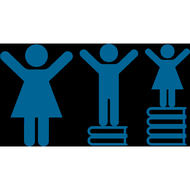
(View Complete Item Description)
Students will read A Raisin in the Sun as they discuss and analyze the "American Dream." In this lesson, students discuss the concept of the "American Dream" and using poetry by Langston Hughes compare the "dream" to the reality experienced by particular groups who have historically struggled for access and equality. Students then further this exploration by reading and discussing Lorraine Hansberry's A Raisin in the Sun, using the play as a basis to examine the way 1950s American society particularly restricted African American access to the "American Dream." Through their reading of the play, interactive class discussion, group work, art activities and creative writing activities, students gain an understanding that the concept of the "American Dream" has been and continues to be multidimensional and complicated, particularly in terms of the historical struggles groups of people have faced in attaining equal rights, access, acceptance, etc.
Material Type:
Lesson Plan
Author:
Carolina K12











